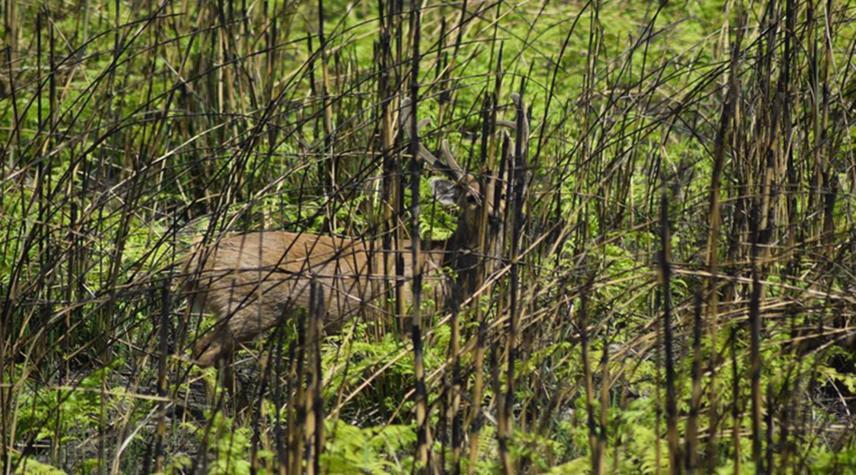Bipana Maiya Sadadev
Estimating population density is a fundamental part of understanding the dynamics of wildlife populations and is crucial for the scientific management of wildlife. Obtaining accurate estimates of population density, however, has always been a challenge for wildlife researchers. In Nepal, most conservation and management activities have focused conserving charismatic megafauna such as the One horned rhinoceros (Rhinoceros unicoris) and Bengal tiger (Panthera tigris tigris). Lesser-known mammals, such as the Hog deer (Axis porcinus) have received little attention. Accordingly, this project aims to compare estimates of Hog deer density using three methods (distance sampling, pellet counts, and camera trapping) based on cost, time, and variability of the estimates (Objective 1). In terrestrial ecosystems, climate change can have complex effects on wildlife. Understanding the current extent of and future changes in habitat suitability is important, particularly for endangered species such as Hog deer. In addition to comparing density estimation methods, we will model the habitat suitability of Hog deer under current and future scenarios based on climatic conditions and topography in Shuklaphanta National Park (SNP), Nepal (Objective 2).

Direct sighting of Hog deer during field survey.
To guide conservation, both natural and social science research play important roles. In addition to knowledge of Hog deer populations and habitat, understanding the attitudes of local people towards Hog deer will help produce robust and effective conservation policies, actions, and outcomes. To collect a representative sample of the diverse community that resides in the buffer zone surrounding Shuklaphanta National Park, local people of all genders, representative of age groups above 18 years, ethnicities, and a variety of educational backgrounds will be interviewed from randomly selected households using semi-structured questionnaires. Along with the surveys, conservation outreach programs will be conducted to disseminate information about Hog deer to the large audiences including school children, the general public, and conservation authorities.